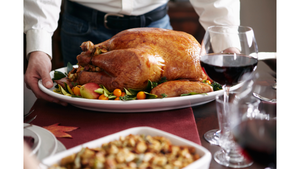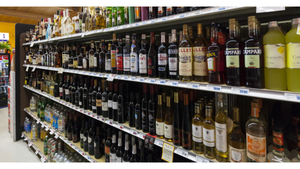THE POP PREDICAMENT
Manufacturers have considered supermarket shelves, floors, ceilings and fixtures to be their turf, where they could deliver last-minute product promotions. Yet, retailers, emboldened by consolidation and a new sensitivity to branding, are adopting the same attitude, and their goal -- promoting their store -- has created a clash point right where it counts most: the consumer."Our business plan going
June 10, 2002
Robert Vosburgh
Manufacturers have considered supermarket shelves, floors, ceilings and fixtures to be their turf, where they could deliver last-minute product promotions. Yet, retailers, emboldened by consolidation and a new sensitivity to branding, are adopting the same attitude, and their goal -- promoting their store -- has created a clash point right where it counts most: the consumer.
"Our business plan going forward this year focuses on two messages for consumers in our stores. One, Food Lion is a brand," said Mike Taschke, director of store merchandising for the Salisbury, N.C.-based supermarket retailer. "The other is value and price."
Food Lion, with more than 1,200 stores in the Southeast, isn't alone.
Post-consolidation pressures have placed a new premium on customer counts, and retailers want shoppers to remember their name -- not manufacturers -- when they walk the aisles. The adoption of clean-store policies and guidelines limiting the scope of point-of-purchase displays is designed to keep the consumer's attention on the retailer, rather than the products inside the store, said industry experts.
"It's becoming increasingly important for retailers to create and reinforce their identity at the local market level to defend against competitive pressures in the marketplace, whether existing players or newcomers," said Jeff Mellin, co-chair of the Promotion Marketing Association's In-store Marketing Council. "So, they prefer to use promotional vehicles that are branded with their identity first, rather than the product."
The shift in the use of signage to promote the store first, and then the product, has presented new challenges to brand marketers still eager to get their message across to consumers at a critical decision-making time, said Tom Butler, Mellin's co-chair on the PMA's In-store Marketing Council.
"The larger retailers have a set visual now of what they want their stores to look like, and have limited the number of POP pieces that can be displayed in-store, whether it's on a shelf or a display pack or floor graphics," he said.
For the past several years, Tyson Foods, Springdale, Ark., has accommodated changing retailer tastes in POP by limiting its in-store promotion materials primarily to pieces that have a direct role in merchandising the product.
"Our point of sale is not extensive, I would say, mainly because of the retailer guidelines [as to] what can be used," said Sue Quillin, the giant protein processor's vice president of retail marketing. The company's main vehicle consists of plastic racks that are put in the freezer case and maintain the upright positioning of the products. Case dividers, "small" danglers and rail strips are also employed, she said.
"Those are the pieces that have been most popular with retailers to use, so we try to tailor our program to their needs," Quillin said. "[But] not everything will work at every retailer, so the pieces we've designed have been those more commonly used."
As part of a larger game plan, Tyson is launching a new masterbrand package design that includes a larger, repositioned logo, a vibrant red color theme, lifestyle and convenience-level messages, and food-allergen warnings on value-added items. Quillin said the investment in the redesign is radical enough to act as its own POP, which helps reduce at least some of the challenge.
"In the past, we've probably done more signage that we would print and take into the stores," Quillin said. "[But] now, retailers have their own standards for sizes and how the graphics are laid out. They certainly want to keep their stores looking clean and conforming from store to store, and whenever possible, we participate in their programs."
Additionally, the company's rollout includes freestanding inserts, Web-site promotion, direct mail and national print/radio campaigns.
More brand marketers may face similar promotion decisions as retailers rethink their POP standards. Prior to issuing its new guidelines, a typical Food Lion store might have three dozen brands being advertised, Taschke said. The effect was something akin to a mini-mall of names, logos, colors and messages -- all competing for customer attention. The retailer's new approach, limiting the messages to price and value, is designed to channel manufacturer promotions to customers, but on the retailer's terms.
In Food Lion's case, "We feel the customer can only absorb so many messages during a single shopping trip, and that's why we want to confine it to price and value, since that is what we're all about," said Taschke.
"We want to present the Food Lion name as a brand, so rather than having a Coke sign saying 99 cents, we have a Food Lion sign saying that," he said.
"It's not that we don't realize the value of manufacturer brands, but this will keep the name on the display of the product itself."
Manufacturers today almost have to approach retailers individually with their marketing wish list, a step that places new emphasis on the development phase of POP programs. According to veteran marketers, store operators are primarily looking for account-specific designs in POP materials that provide their stores with an equitable share in the display. The extent to which retailers can get some co-marketing value from the program can likely determine its acceptance, they said.
"The vast majority of programs that are well-received and supported by retailers are those that the manufacturers have taken the time to literally plan the program with the specific retailer," said Scott Simcox, vice president of marketing for Insignia Systems, a POP provider based in Plymouth, Minn. "Retailers really want to put things in their stores that bring service and value to customers, and enhance the shopping experience for them and, ultimately, sell more product. So, to the extent that they're presented with materials that fall short of meeting those goals, they're going to ask why they should put it up."
As retailers' objectives for their POP strategies change, so do those of manufacturers, who have come to view in-store advertising differently than in the past, particularly in certain super-competitive categories like cereals and soft drinks. Jayne Mullen-Sampson, vice president of marketing, FLOORgraphics, Princeton, N.Y., said she's seeing more marketers move dollars from broader media to the retail level, translating a campaign right into the store at the point of decision.
"They've realized that they have to be there when people are trying to differentiate between the brands," she said. "It's like having that last word before someone buys something."
The renewed interest in developing aisle intercepts is bolstered by a recent, multiphase study conducted by Point-of-Purchase Advertising International and the Advertising Research Federation, which found that in-store supermarket POP can generate sales increases of up to 27%.
However, the obvious benefits POP provides to both manufacturers and retailers have been tempered with the retailer's desire to share the spotlight, using their own name as part of the display.
"In some cases, manufacturers have transferred their information onto a retailer-directed card or shelf-talker that would promote a program, so that the retailer is then put in the spotlight, lending the impression the offer is being made by the retailer, rather than the manufacturer," said PMA's Butler, who is also president of the Sunflower Group, Overland Park, Kan.
What's more, manufacturers are learning retail policies extend beyond the message, to fixtures and physical setup. Food Lion's Taschke said some of the biggest vendors -- Coke and Pepsi among them -- are being notified of new requirements concerning the appearance of in-store space.
"What we're looking for now is an endcap-type of fixture from our vendors, whether they're Coke, Pepsi or snacks. They would all be of the same style that would match our gondola color, basically a three-sided, beige format," he said. "And, they would have a standardized height to match our shelving gondolas."
With the advent of larger retailers with nationwide reach, manufacturers are being forced to listen and do all they can to work within the programs and promotional vehicles that have been sanctioned by each individual retailer, according to Mellin, who is also president of the Promotional Marketing Group, Alta Loma, Calif., aside from his PMA duties.
"Where one retailer might favor one particular vehicle, that's where manufacturers are going to focus their dollars; and then somewhere else, another retailer might prefer a different vehicle, and the dollars get redirected," he said. "So, local marketing funds may become more important to the manufacturer because it provides flexibility to the local people -- whether reps or district or regional managers -- to work within and reinforce the vehicles the retailer chooses."
About the Author
You May Also Like




